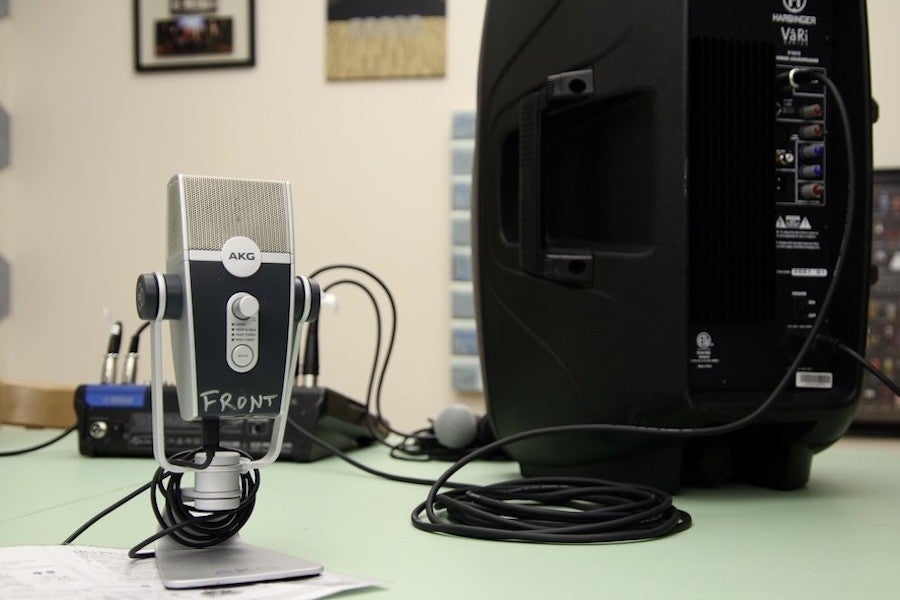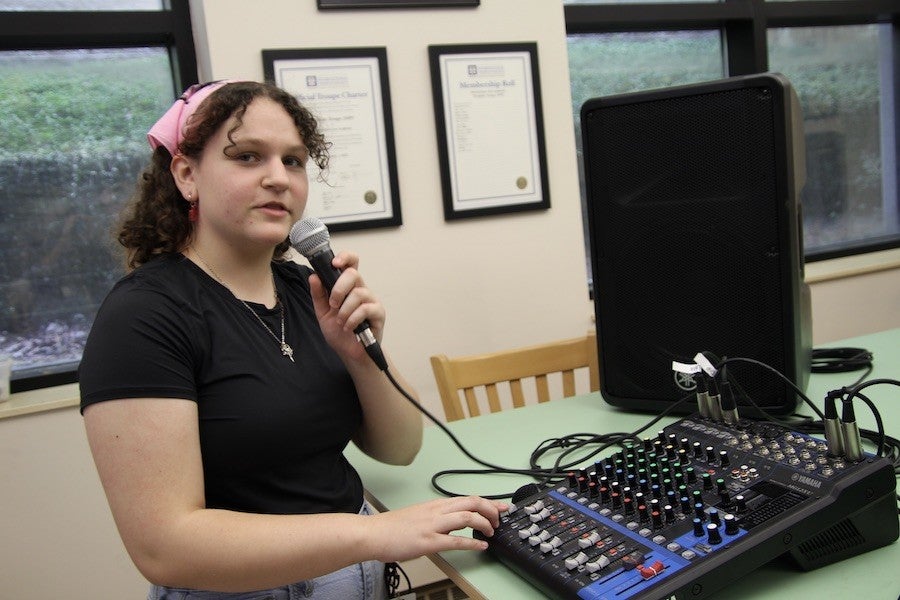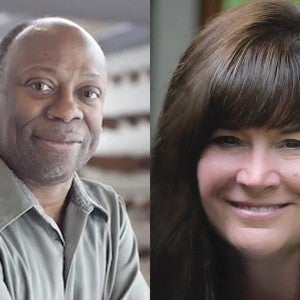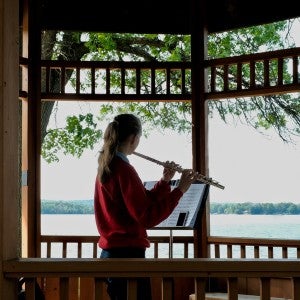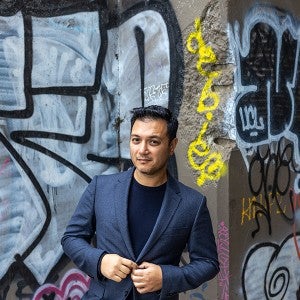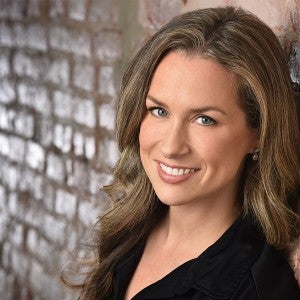Crafting sonic worlds: The new Sound Design Intensive at Arts Camp explores the secrets of storytelling with sound
Interlochen Arts Camp is turning up the volume on creativity in summer 2025. Learn what the new intensive is all about and who should apply.

Students in the Sound Design Intensive will work with professional-grade sound design equipment, including top-of-the-line speakers and DAWs.
New for summer 2025, Interlochen Arts Camp students will be able to take a one-week Sound Design Intensive and learn professional techniques for creating immersive music and sound effects for theatre, film, and animation. What exactly is this new program, and who should apply? We sat down with Director of Theatre Design & Production Stephen John to hear more about what qualifications he’s looking for in students and what they’ll learn in this fast-paced week.
What’s the Sound Design Intensive all about?
Sound design is all about creating powerful soundscapes that make stories come alive for a listening audience. The goal is to build experiences that are so impactful that they don’t even require visuals.
“I have an MFA in directing, and one of the first things that you learn in directing class is that your audience should be an audience of two: someone who's blind and someone who's deaf,” says John. “Through sound design, you learn how to tell the story to the blind person just through text, audio, and intonation. And then we ensure that the story matches the story that’s being told through all of the visual elements.”
At Interlochen Arts Camp’s Sound Design Intensive, students will learn sound design skills through hands-on practice. They’ll build a rich sonic vocabulary, learn textual analysis techniques, and practice creative conceptualization. All the while, they’ll have access to state-of-the-art Digital Audio Workstations (DAWs) to edit and manipulate sound.
John, alongside other guest artists and sound design professionals, hopes to pass on a deep understanding of sound design fundamentals, which begins with simply developing a good ear.
“It all starts with actively listening to everyday situations,” says John. “We’ll have the students walk through campus, close their eyes for a moment, and think: what sounds have they learned to ignore? We’ll identify everything that we hear and catalog it. Then we can start to think about how we create a sonic world by putting those elements back together.”
The end result of sound design is a film, animation, video game, or theatre production that is deeply compelling to the audience.
“Ideally, we’re looking to create an emotional response within each audience member,” says John. “Like any other art form, sound design is a way of expressing emotion.”
Ideally, we’re looking to create an emotional response within each audience member. Like any other art form, sound design is a way of expressing emotion.
Who should apply for the Sound Design Intensive?
Students who apply for the Sound Design Intensive should have some experience with audio design. The intensive’s portfolio requirements invite prospective students to share whatever sound design projects they have worked on so far, from created soundscapes and/or effects to relevant paperwork like cue sheets and script analysis.
“If you were able to mix mics for a show, create a simple sound design, or act as sound designer for a live production, animation, or small film, you’re a student who could absolutely step in and take it to the next level in this intensive,” says John.
He adds that some level of software knowledge is also helpful: “Some experience with QLab, GarageBand, Pro Tools, or Audacity will really help you do well in this class.”
What will I have to take home after completing the intensive?
At the end of the intensive, all students will have produced a short soundscape that could form the backdrop to a film or animation scene, short film, or play. This can become a valuable portfolio piece for use in college auditions or interviews.
Ready to take the plunge into sound design this summer? Learn more about the Sound Design Intensive.

